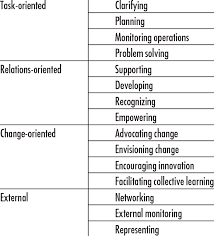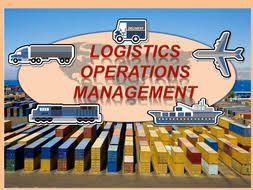
Fleet Planning
Order Instructions:
Fleet Planning
Project description
when considering an order for new aircraft” fleet commonality” is an element that planners consider. What are the main benefits of commonality between a new aircraft and the existing fleet? How significant are each of these? How long lasting?
some airlines seems to value these benefits highly and order aircraft from the same manufacturer as their existing fleet , with much commonality .Give at least two recent examples of this and give the likely rationale for their decisions, with references.
on the other hand some airlines seem to find on offer sufficient attractive to persuade them to forego the benefit of commonality with their existing fleet fleet. why might this be? Give at least two examples of this with likely rationale for their decisions, with references. How might the benefits be mitigated?
why might an airline order two different aircraft types from two different manufacturers with similar specifications, foregoing commonality benefits within the new fleets? with references.( HINT: Think of a Boeing and an Airbis with similar specs then Google each type- BXXX aircraft orders and Axxx aircraft orders . Having found an example , Google that airlines aircraft orders. This normally takes you to news items which may include the rationale.
what opportunities and issues do full or partial mergers between airlines raise in fleet decisions in terms of commonality? give at least one example with references.
Does joining an alliance offer similar benefits in terms of fleet acquisitions? Give your reasons.
SAMPLE ANSWER
Fleet Planning
Introduction
Fleet commonality is a factor that most airline companies are focusing on. Airlines have the opportunity to choose from different products when a new aircraft is being purchased. However, planners tend to opt for the aircraft that has commonality to the already existing products. This is because there are many benefits associated with this trend. On the contrary, research also shows that going for a new type of aircraft may be the best way to boost sales to a much higher level.
Benefits of Commonality between a New Aircraft and the Existing Fleet
This strategy has benefits in the operational perspective in that one pilot will still be able to operate the new aircraft. This is significant since in case of an emergency, one pilot can easily step in for the other. Therefore, the airline will not have to suffer losses from delayed or cancelled flights. Such occurrences result to loss of loyal customers as they can start to question the reliability of the airline. This benefit is long lasting because the pilots will always be able to step in for each other. Thus, when one pilot cannot be available for the flight, the other pilot or an assistant will still be qualified to handle the plan. When planes are delayed or cancelled, the airline usually suffers a great loss even in the long term because the customers lose trust in the company.
Second, the airline company will also be able to reduce costs associated with training new pilots, or transitioning a pilot to the new aircraft. When a new type of aircraft is purchased, these costs will be inevitable since the current pilots will not be equipped with the necessary skills to handle such a product. This benefit is short lasting because the costs will only be saved whenever a new aircraft is purchased.
Third, the staffing level, which may also change as a result of a new aircraft with no commonality, is also reduced. The more the staff, the more the costs associated with salaries. This may affect the financial stability of a company, especially when it is still new and growing. The airline company will be in a position to benefit from salary amounts that they are able to pay their staff without delay. Fourth, a new type also requires additional spares, a factor that may be avoided in case a common product is purchased. Although this is not of much significance, the airline may benefit from saved costs, which may have been influenced by the purchase of entirely new spares. Unfortunately, this amount is short lasting because whenever a spare is used, the airline company will still be forced to purchase another product.
Good examples of airlines with the above characteristics include Southwest and JetBlue airlines. JetBlue features the introduction of new types of aircrafts into its fleet. The main reason why this is so is that the company is trying to increase revenue by offering products that will meet all types of market demand. The products are supposed to satisfy the unmet needs of the customers. For instance, starting in the second quarter of 2014, this company will launch a refreshed version of core JetBlue Experience, as well as introduce another type that will enhance experience of passengers (Our Planes, 2014). On the contrary, Southwest airlines are strict on introducing a common aircraft to its fleet. This is because the costs associated with it will not be excessive; therefore, the company will still be able to manage the customer service offered (Southwest Corporate Fact Sheet, 2014). Here, the plane tickets are purchased at low price, and other services are offered for free.
Reasons why some Airlines Forego the Fleet Commonality Strategy
Although choosing fleet commonality may feel like the best option for airlines, it is also common to find some airlines giving up the commonality for a new type of aircraft. This is usually the case when an airline notices an opportunity to save more and still benefit to a certain level, when the new type of aircraft is purchased. The target market is the major factor that drives the creation of a product or service. Therefore, it closely affects the type of fleet planning decision made. Just like many other companies, market demand is what airlines try to meet. When a new aircraft has all the content that will make it capable of satisfying the needs of the target market, and the price offered for the product is fair, then an airline company will most certainly opt for it. Another reason why some companies choose to mix their aircraft is because they already know the advantages. At times, purchasing a new type of aircraft is usually more beneficial than going for the common type. This is in terms of the long term benefits associated with gaining the right fleet size.
The Southwest and JetBlue carriers can help demonstrate this occurrence. Southwest airline decided to go with the fleet commonality because the management noticed that there is so much at stake. This airline offers cheap services to its consumers, and this is the major method that they use to ensure that customers return for other services (Galletti, Lee & Kozman, 2010). JetBlue, on the other hand, is a company that is more focused on the market demand. Therefore, if they bring in new products to meet market demand, the company will benefit from more sales in future (Chunhua, Johnson & Smith, 2009). Currently, there is not much to lose if a new aircraft is introduced mainly because the tickets are sold at an expensive price. These benefits associated with each choice may be mitigated by ensuring that the airline company decides basing on qualitative research conducted on its system.
Commonality benefits can also be foregone when an airline opts to purchase two similar airline products from different producers. The main reason why this happens is as a result of product quality. Both companies that are producing similar products cannot have the same quality policies (Brüggen & Klose, 2010). Therefore, one aircraft may have better quality than the other. When the airline company has two airline products from different producers, the risk of suffering total loss is reduced. If one aircraft fails, the other one will probably still be functioning and bringing in sales. Another reason for ordering same product from different companies is so that the airline can enjoy the various benefits associated with each individual product. Although the resulting feel will be similar, such an airline will have taken a mixed fleet approach. Along with the benefits of having a mixed fleet, the airline will still be able to reduce costs for the new fleet (Treanor, Carter, Rogers & Simkins, 2013). With a similarity in products, pilots will be able to cater for the other product without problems since they are basically the same.
Opportunities and Issues that Mergers between Airlines Raise in Fleet Decisions in Terms of Commonality
Mergers in airline companies usually raise either opportunities or issues on the fleet decision for both full and partial situations. When an airline merges with another, it becomes difficult to make a decision without informing the other party. This usually results to great disputes since the two airlines both have their own leaders. Thus, it becomes unclear on who should have the final say. For example, American and US Airways recently merged officially to create one of the biggest airlines in the region (Rushe, 2013). These two airlines have opportunities to grow since each group will enjoy the increased sales. There is also a better opportunity to cut costs since the airline will now be treated as belonging to one specific airline. For instance, the American and US Airways merger was one way to help get the American airways out of its bankruptcy situation (Rushe, 2013). Therefore, any airline company hoping to reduce costs and increase growth should consider merging its aircraft with that of another company, which has promising results.
The Effect of Alliances in Fleet Acquisitions
Merging airlines, however, is also associated with various challenges that are worth considering before getting into the process. First, merging the staff and technology is usually very difficult as what worked for one company may not be what will work for both (Rushe, 2013). It takes time to find a balance in what works for both companies. The staff of the airlines may pose a challenge when they start resisting the change. This will require time and necessary management skill to help change the situation. For example, in 2010 United’s merger with Continental resulted to years of technology problems (Rushe, 2013). Therefore, in terms of commonality, issues will be present, and thus, the decision making process is made more difficult. This affects productivity because there are times when a decision is required as fast as possible.
The problem with a merger is that the decision to purchase an aircraft is greatly affected. Before a merger, each airline has the freedom to obtain an aircraft that will meet its customer’s needs. The customer needs of airlines are not same since their prices and pricing strategies are also different. Hence, fleet acquisition benefits will not be similar for both sides. Only one airline will eventually acquire the merged plane (Galletti, Lee & Kozman, 2010).
Conclusion
There are advantages for both choices on fleet commonality. Management should not choose to go for a common approach since what works for one airline will not work for all airlines. Instead, fleeting decisions need to be made based on the financial and operational states of the airline. The type of aircraft purchased needs to make the situation better by bringing in more sales and cutting costs. If the company notices that sales will be disturbed, and costs will be too much, then the choice in mind is probably not the best.
References
Brüggen, A., & Klose, L. (2010). How fleet commonality influences low-cost airline operating performance: Empirical evidence. Journal Of Air Transport Management, 16(6), 299-303. doi:10.1016/j.jairtraman.2010.02.006
Chunhua, G., Johnson, E., & Smith, B. (2009). Integrated Airline Fleet and Crew Robust Planning. Transportation Science, 43(1), 2-16.
Galletti, D. W., Lee, J., & Kozman, T. (2010). Competitive benchmarking for fleet cost management. Total Quality Management & Business Excellence, 21(10), 1047-1056. doi:10.1080/14783363.2010.487709
Our Planes. (2014). Retrieved July 27, 2014, from JetBlue: www.jetblue.com/travel/planes/
Rushe, D. (2013, September Monday). American and US Airways officially merge to create world’s biggest airline. Retrieved July 27, 2014, from the Guardian: http://www.theguardian.com/business/2013/dec/09/american-us-airways-merge-worlds-biggest-airlines
Southwest Corporate Fact Sheet. (2014). Retrieved July 27, 2014, from Southwest: http://www.swamedia.com/channels/Corporate-Fact-Sheet/pages/corporate-fact-sheet
Treanor, S. D., Carter, D. A., Rogers, D. A., & Simkins, B. J. (2013). Operational and Financial Hedging: Friend or Foe? Evidence from the U.S. Airline Industry. Journal Of Accounting & Finance (2158-3625), 13(6), 64-91.
We can write this or a similar paper for you! Simply fill the order form!












